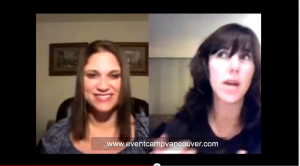Hiring speakers for meetings and conventions can be expensive. Good speakers cost good money. As a professional speaker, I understand that it’s important to pay speakers what they are worth as their time is valuable. However, as an event planner, asking speakers to provide value back to the organization is a good practice.
When you are looking at speaker contracts and negotiating fees, you may want to consider asking a speaker to write articles or blog posts, stay for networking events, or provide an interview that you can share with your attendees. Many speakers will be happy to help promote their sessions and help the participants understand them and their content better.
If you are considering interviews as part of a pre-conference marketing strategy, one great and affordable way is to record interviews via Skype. Here are some tips on how to do this.
Seven Tips on Conducting Interviews of Speakers
- Select which speakers you want to interview (not everyone needs to be interviewed). If you haven’t included this in their speaker agreement, that’s OK, just ask them if they want to participate. Both paid and unpaid speakers should be considered for interviews.
- Decide who will conduct the interviews. Interviewers can be leaders, staff or committee members in the case of an association. Interviewers should be comfortable being on camera and asking questions.
- Invite the speakers to be interviewed and select a date and time.
- Create a number of questions to ask the speaker, but allow the conversation to flow. These interviews should only last 2-3 minutes so proper planning is important. When thinking about content, interviews should be a teaser for the session combined with some educational component.
- At the beginning of the video, interviewers should introduce themselves and then thank the speaker for their time before beginning the questioning.
- Conduct interview.
- Once the interview is over, the interviewer should thank the speaker and remind people when and where they will be presenting.
Seven Steps to Recording Interviews Via Skype.
- Both the interviewer and interviewee should download Skype which is a free software program available for both PC and Mac.
- Once the software is downloaded, free, individual accounts need to be created, if they don’t already have them. Then the interviewer should invite the speaker to connect on Skype.
- In order to record the video, both parties will need a webcam. Many computers have them built in or they can be purchased for about $40 (I recommend the Logitech Webcam). Before starting the interview, check the lighting to make sure that each person looks OK on the webcam.
- The interviewer will need to download recording software. For Mac users, free software is available called Call Recorder. For PC, I haven’t found any good free options, but there are a handful of inexpensive ($30-50) paid options including Camtasia and Supertintin. Follow the instructions for the software, making sure that Skype is in full-screen mode. To avoid an echo, using an external microphone is best, but it is not a requirement. These microphones are about $20. Organizations may want to purchase a webcam and microphone to ship to speakers who may not already own the equipment. I use a Logitech Microphone.
- Once the videos are recorded, you may want to edit them. Options for editing include iMovie (Mac) and Windows Movie Maker (PC). However, if you are like me, you may want something simpler and YouTube provides a great solution. When files are uploaded to YouTube you can now correct color and add annotations and titles. iMovie and Windows movie maker are both consumer products and you may want to spend some time learning them for more sophisticated editing. For high-end editing, Final Cut (Mac) or Adobe Premiere Pro are professional options with bigger learning curves and a high price-tag. The good news is that there is an editing option for all levels.
- Once your video is finished you will want to post it on YouTube. When uploading to YouTube, you will want to upload to your organizations channel. If you don’t already have a channel (simply an account name), they can be created for free and can be branded with your organization logo or other custom background. Please note that when uploading to YouTube you may need to convert the video file to an MP4 format which can easily be done at http://www.online-convert.com/.
- Once your video is uploaded, you want to share it with your attendees and potential attendees via email or social media channels. Ask your speaker to share it with their network as well to maximize exposure.
There are many ways to conduct interviews, but these are just some suggestions for informal interviews that can add a lot of value. There is not right or wrong method, but speaker interviews can be a great tool for promoting educational content.

